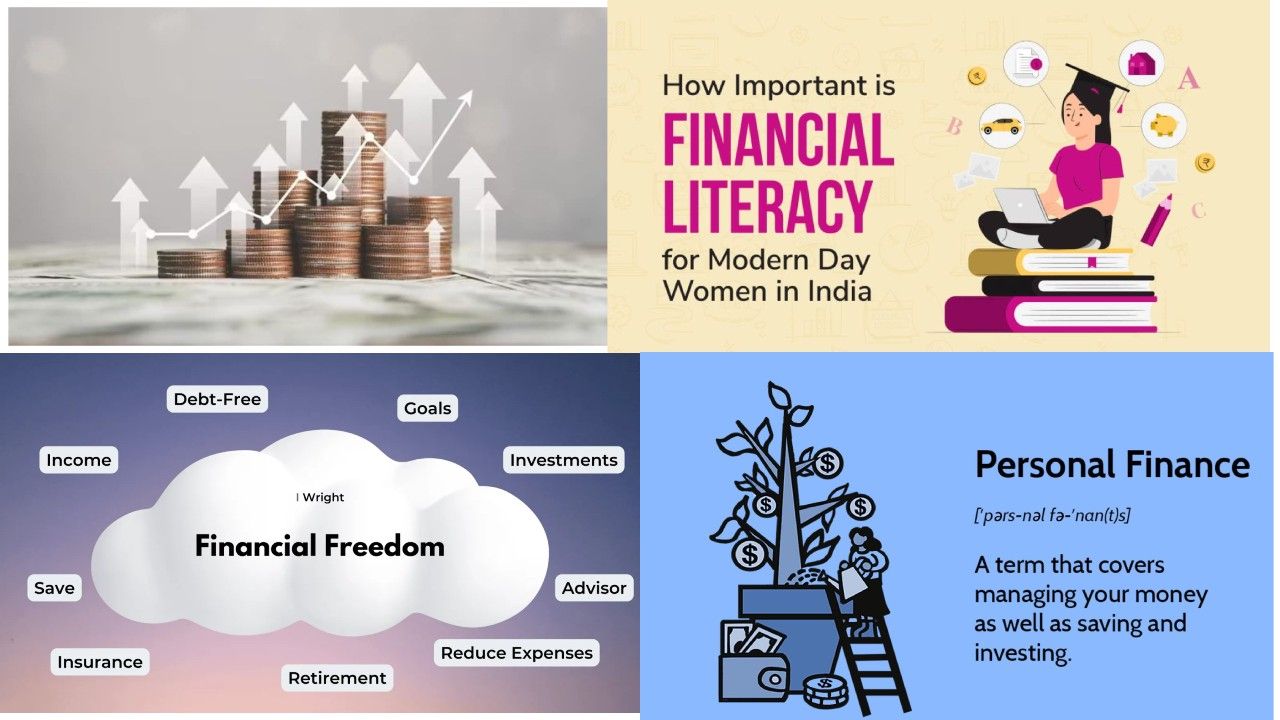- 1 Why is Financial Independence important?
- 2 Steps to Financial Independence and Retire Early in the Current Economy
- 2.1 1. 50/30/20 Rule Budgeting
- 2.2 2. Increase Your Savings Rate
- 2.3 3. Invest Wisely and Diversify Your Portfolio
- 2.4 4. Take Advantage of Tax-Advantaged Accounts
- 2.5 5. Cut Waste and Move Toward Minimalism
- 2.6 6. Create Passive Income Streams
- 2.7 7. Plan for Healthcare Costs in Retirement
- 2.8 8. Stay Focused and Be Patient
- 3 Conclusion

In the modern economy, the dream of financial independence (FI) and early retirement (ER) is well within reach. With correct strategies and the right attitude, one can break free from the shackles of working 9 to 5, retire early, or even before the traditional age of retirement, and truly live a life of economic freedom. This article describes the best strategies to acquire financial independence and retire early, designed for today’s economic scenario.
Financial Independence, abbreviated as FI, refers to an amount of income-generating assets that makes you less reliant on traditional employment for meeting your living expenses. Quitting your job early means stopping work before one would normally retire at a retirement age, typically at age 65.
With increased costs and uncertainty about economic security, planning to reach FI/ER takes planning, discipline, and shrewd investing.
Why is Financial Independence important?
Freedom: FI makes possible living life on your schedule rather than a forced financial dictate of what to do for how much.
Reducing stress: The income generates an independent means to allow survival without working; no worry about losing the job and no anxiety of bills that won’t get paid
Pursuit of passion: Early retirement makes room for time for fun things, traveling, and business ventures.
Spends More Time with Family. Financial independence gives the flexibility of spending precious time with dear ones instead of dedicating hours to a high-income-grabbing job.
Steps to Financial Independence and Retire Early in the Current Economy
1. 50/30/20 Rule Budgeting
Financial freedom begins with good budgeting. There is a prominent budgeting strategy called 50/30/20 Rule that divides your income after taxes into three pockets:
50% for Needs: This is the essential spending which includes shelter, utilities, and groceries.
30% for Wants: This includes entertainment, dining out, and travel.
20% for Savings and Investments: This portion goes into building wealth through savings accounts, retirement funds, or investment vehicles.
By sticking to this rule, you can maximize savings and accelerate your journey to financial independence.
2. Increase Your Savings Rate
While cutting expenses is critical, an even bigger savings rate is key. A high savings rate can make the difference between a traditional retirement and an early retirement. To that end:
Live below your means: Be frugal and prioritize long-term over short-term pleasures.
Set up your savings on autopilot: Make automatic transfers to savings and investment accounts.
Increase your income: Find side hustles, freelance opportunities, or career advancement that can increase your earnings.
For instance, a savings rate of 50% or higher can allow you to retire much earlier than someone saving at a traditional rate of 10-20%.
3. Invest Wisely and Diversify Your Portfolio
Investing is the best way to grow your wealth. In today’s economy, traditional savings accounts offer minimal returns, which makes investing in stocks, bonds, index funds, and real estate essential.
Here are some investment strategies for financial independence:
Stock Market: Index funds and ETFs that track broad market indices like the S&P 500 are low-cost and provide strong long-term returns.
Real Estate: Investing in rental properties can provide a steady stream of passive income and long-term appreciation.
Dividend Stocks: Dividend-paying stocks can provide reliable income, making them ideal for those pursuing FI/ER.
Bonds: Fixed-income securities can add stability to your portfolio, offering a balance to higher-risk assets.
The goal is to build a diversified portfolio that balances risk and reward while compounding wealth over time.
4. Take Advantage of Tax-Advantaged Accounts
Tax-deferred accounts can increase contributions to your wealth-building process quite drastically. You can invest before tax in accounts such as 401(k), IRAs, and Health Savings Accounts.
401(k) and IRA: They come with tax-deferred growth. Your investments grow tax-free and do not have any annual taxes. You should aim to contribute the maximum allowed yearly amount in these accounts to reap the full benefits of them.
HSAs: Triple-tax-advantaged accounts in case you’re eligible. Contribution, growth, and withdrawals, all for qualified medical expenses tax-free.
Diversification with these accounts will actually reduce your taxes while boosting your wealth.
5. Cut Waste and Move Toward Minimalism
Moving toward minimalism is perhaps the biggest theme of Financial Independence, Retire Early. Cutting wasteful expenditure can dramatically drive up savings rates. Try:
Downsizing your home: A smaller home means lower mortgage payments, property taxes, and utility bills.
Reducing lifestyle inflation: As your income increases, avoid upgrading your lifestyle to match it. Instead, focus on saving and investing the extra income.
Canceling subscriptions: Evaluate all of your recurring subscriptions, from streaming services to gym memberships, and eliminate those that are non-essential.
Living a minimalist lifestyle can free up resources for investing and faster wealth accumulation.
6. Create Passive Income Streams
The most effective way to retire early is through developing passive income streams. It is the source of earning money that requires little to no effort in the present and will be yielding in the future. Passive income can be developed through real estate rental income, royalties, stock dividends, among others.
Dividend Income: Dividend-paying stocks offer a steady stream of income without selling the underlying investments.
Online Businesses: Affiliate marketing, blogging, or creating digital products such as eBooks or courses can eventually generate passive income.
Creating multiple passive income streams eliminates reliance on a paycheck and accelerates the journey toward financial independence.
7. Plan for Healthcare Costs in Retirement
Healthcare can be an expensive cost in retirement, especially if you retire before you are eligible for Medicare. You should prepare for these costs by:
Having a Health Savings Account. This is an account through which you can save on healthcare expenses tax-free. You should consider your options for health insurance: Check out private health insurance options or sign up in your area’s healthcare marketplace.
Building an emergency fund: An adequate emergency fund will cushion the shock of unforeseen medical expenses during early retirement.
8. Stay Focused and Be Patient
Financial independence and early retirement is a long-term goal that requires dedication, discipline, and patience. Though the journey may be overwhelming, maintaining a long-term focus on your financial goals can make a huge difference.
Track your progress: Use budgeting apps or spreadsheets to monitor your expenses and savings goals.
Celebrate small wins: Celebrate milestones, such as reaching savings targets or hitting investment goals, to stay motivated.
The road to financial independence may take time, but with persistence, it is entirely achievable.
Conclusion
In today’s economic climate, achieving financial independence and early retirement is more possible than ever. By following strategic steps—such as increasing your savings rate, investing wisely, cutting unnecessary expenses, and developing passive income—you can build a secure financial future and retire on your terms. Start planning early, stay focused, and enjoy the freedom that comes with financial independence!








